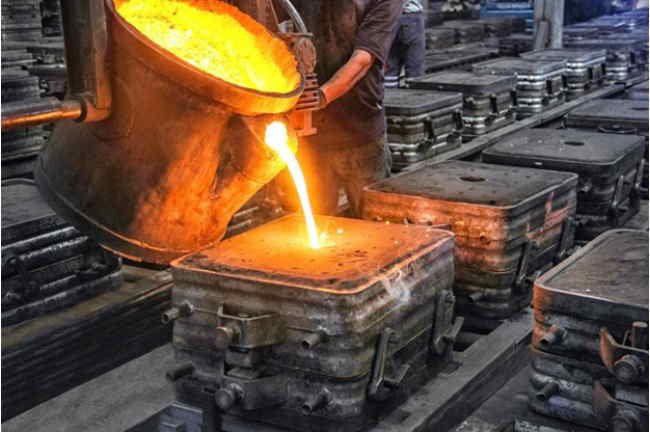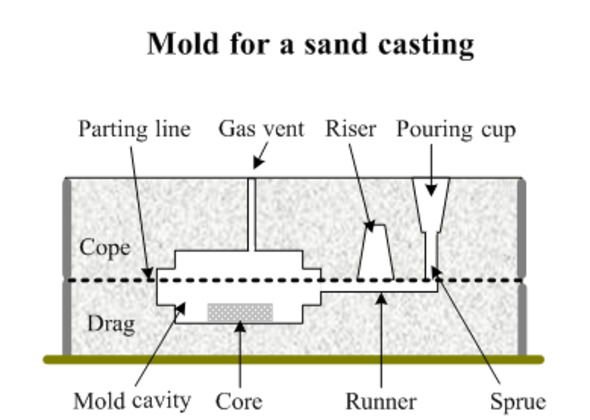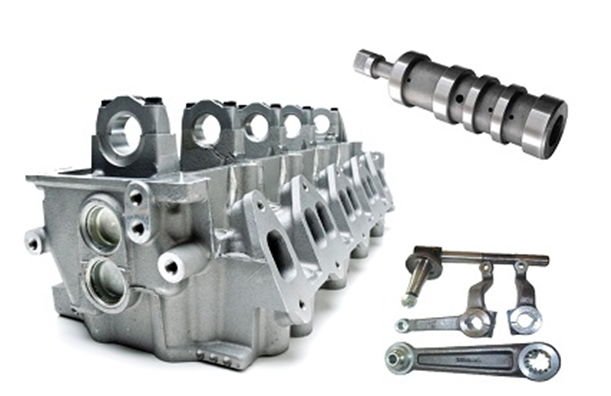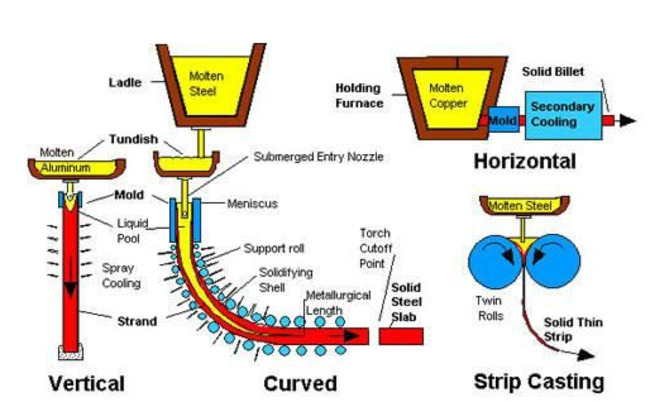What is Metal Casting? 5 Types of Metal Casting Process

5 Famous Types of Metal Casting processes are Sand Casting, Centrifugal Casting, Investment Casting, Plaster Casting, and Continuous Casting.
Casting is the technique of pouring liquid material, like molten steel, into the hole of a specifically built die and allowing it to dry. The item extracts from the mold after recrystallization to receive different finishing procedures or uses as an end product.
Casting techniques usually employ to produce complex hollow and solid forms, and cast goods may found in a wide variety of industries such as aviation equipment, automobile components, and mining equipment, etc. Several companies manufacture high-quality stainless equipment like the FUCHENG LHD machines.
While casting is among the world’s oldest production processes, advancements in casting innovation result in a diverse range of special casting processes. Hotpress techniques like die-casting, plaster casting, investment casting, and sand casting all have their own set of advantages in the production process.
Analyzing the benefits and drawbacks of the various kinds of casting methods may assist in determining which technique is most appropriate for a specific manufacturing process. At DAWANG CASTING, you can learn further about types of metal casting methods.
Sand Casting

Sand casting is one of the famous Types of Metal Casting. However, Sand casting usually carries out using silica-based items like organically or inorganic bonded sand. Casting sand often forms highly crushed, spherical particles that may firmly pack up to provide a smooth molding ground. The casting intends to minimize the possibility of ripping, cracking, and perhaps other defects by letting for some elasticity and contraction during the drying portion of the method. Sand may also reinforce by adding clay that makes the particles bind more tightly. Sand Metal Casting uses to make automotive parts like engine blocks.
Patternmaking, molding, heating and dumping, and washing are all stages in the sand casting process. The design is the shape wherein the sand compacts divide into two sections, the cope, and the pull. The handle takes and the design retrieved when the sand has compressed enough to duplicate the design.
The handle then restores, together with any extra inserts known as core pieces. Just after the steel has put and hardened, the casting withdraws, the lifters and valves utilize in the casting operation remove, and then the casting washes of any attached sand and dirt.
Centrifugal Metal Casting

A water-cooled mold is spun at great speed across its central axis as molten metal pours into real centrifugal casting. The molten steel draws in an equal layer over the mold’s bottom by centrifugal force. The end casting should have similar shapes around the center of rotation for this technique to function. As a result, this casting method best fits for molds that are approximately circular and cylindrical, such as pipes and rings.
Items cast using this technique often feature a low probability of failure. Residues settle around the casting’s hole and inner layer and my machine off despite the toughness of their continuous construction. Most tubes and valves used underneath pressure form axially.
Some tiny steel castings, such as jewelry, create utilizing a centrifuge, which revolves a whole mold around a center point. Then drawing steel from a furnace since it spins. Such castings are a kind of stress casting rather than genuine centrifugal castings.
Investment Casting

Investment casting, also known as wasted-wax casting, employs a discarded wax template for every cast component. The grease is poured straight into a mold, extracted, and then covered with a hard substance with a binding substance in phases to form a thick layer. Several patterns combine onto a single plate. The designs are flipped and baked in furnaces to separate the wax after the plates fix.
The leftover shells then fill with molten metal, which solidifies into the resin designs. The hard coating removes to expose the finished casting. Components for the vehicle, power generating, and aviation sectors, like rotor blades, often built using investment casting. The following are a few of the primary benefits and drawbacks of investment Metal Casting:
- Capability to manufacture thin-walled components with complicated shapes
- A high level of precision and precision in dimensional findings
- Surface polish and precision in final parts are of a pretty good grade
- The ability to cast either non-ferrous or ferrous metals
Plaster Casting

Plaster casting is a method of producing non-ferrous metal components with a uniform, clean texture. This plaster casting often uses to create specifically complex components with geometrical precision. The template for the casting, like many contemporary designs, generates in AutoCAD or another kind of program and contains shrinkage tolerances.
The mold created using plaster made of lime and calcium sulfate combined with talcum, H2O, sodium silicate, sand, and asbestos. Combining these ingredients creates a sludge that pours over the design that treats with just an anti-adhesive to prevent the plaster from adhering to the design. Also, plaster casting is one of the famous Types of Metal Casting.
Molds develop in a matter of minutes, after which they took from the design and cured. The centers and molds then join before filled with liquid steel. Whenever the metal condenses and solidifies like investment casting, the mold tore away to liberate the component.
Continuous Casting

Many metal components that we think fully folded, polished, or somehow produced began casting ground. Continuous casting produces blooms, airframes, and blocks that are various sizes of primary metal forms extruded via a fixed shape. The basic material for wrought steel creates during this casting method. The continuous casting method begins on a significant level above the manufacturing floor. The liquid steel deliveries through a funnel, which regulates the pace of casting.
The duct covers a mold underneath it that is a basic form that is typically 20-80 inches tall and shaped like a cube, round, and rectangle over its diameter. The mold sides chill such that the casting’s outside solidifies because it goes inside. When the steel escapes the shape, it solidifies yet remains flexible.
Last word on Types of Metal Casting:
This enables the continuous casting process to curve it, whereby the final product horizontally forms. The block moves to a belt conveyor by a set of tires, whereas chilling showers harden the area. The above 5 are the famous Types of Metal Casting. The continuous steel item slices into usable pieces by gas nozzles on the flat surface, allowing it to lift and stack.

